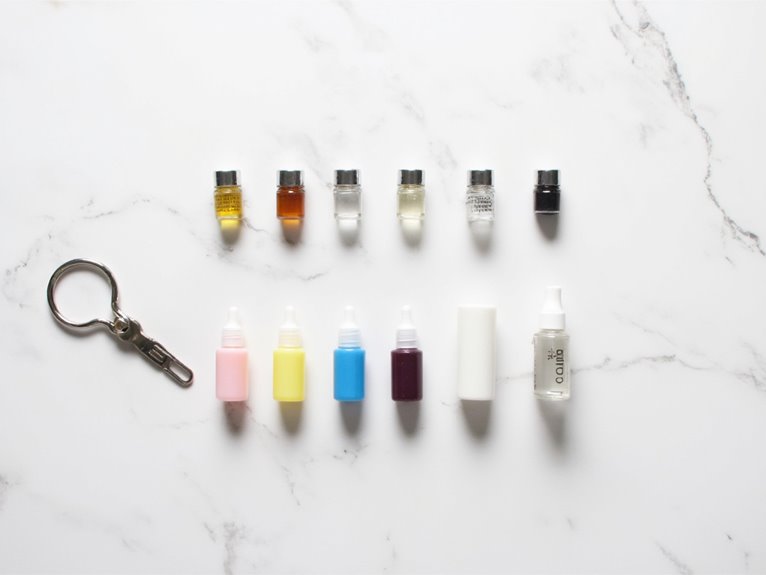How Many Layers of Seasoning for Cast Iron?
The ideal number of seasoning layers for cast iron cookware depends on the type of cast iron, cooking frequency, and personal preferences. For instance, machined cast iron may require only a single layer, while raw cast iron may need multiple layers due to its porous nature. Frequent users may need to re-season their cookware regularly to maintain a non-stick surface. Understanding the factors that affect seasoning, such as oil type, temperature, and cleaning habits, is vital in achieving peak performance. By grasping these nuances, you can tap the full potential of your cast iron cookware.
We are supported by our audience. When you purchase through links on our site, we may earn an affiliate commission, at no extra cost for you. Learn more. Last update on 15th January 2026 / Images from Amazon Product Advertising API.
Understanding Cast Iron Seasoning
Cast iron seasoning is a critical process that involves creating a non-stick surface on cast iron cookware by building up a layer of polymerized oil on the metal's surface.
This layer, also known as the seasoning layer, is formed when oil is heated to a high temperature, breaking down the triglycerides and polymerizing them into a hard, non-reactive surface.
The seasoning layer serves as a barrier between the metal and food, preventing rust and corrosion while allowing for easy food release.
A well-seasoned cast iron cookware is essential for superior cooking performance and longevity of the cookware.
Understanding the process of cast iron seasoning is crucial in maintaining and restoring cast iron cookware.
Factors Affecting Seasoning Layers
Multiple variables, including oil type, temperature, and cooking frequency, substantially impact the durability and performance of seasoning layers.
The type of oil used can affect the polymerization process, with some oils forming more robust seasoning layers than others.
Temperature also plays a vital role, as high heat can cause the seasoning to degrade over time.
Cooking frequency is another significant factor, as frequent use can lead to the buildup of additional seasoning layers.
Additionally, cleaning and maintenance practices, such as avoiding harsh chemicals and using gentle cleaning methods, can also influence the longevity of the seasoning.
Understanding these factors is essential to achieving peak seasoning performance and extending the lifespan of your cast iron cookware.
Type of Cast Iron Matters
The inherent characteristics of different cast iron types, such as raw, machined, or seasoned, substantially influence the seasoning process and its subsequent performance.
For instance, raw cast iron requires more layers of seasoning due to its porous nature, while machined cast iron may require fewer layers due to its smoother surface.
Seasoned cast iron, on the other hand, may only need maintenance seasoning.
Understanding the type of cast iron you're working with is vital in determining the ideal number of seasoning layers.
Failure to take into account these differences can lead to ineffective seasoning, resulting in rust, poor non-stick performance, and reduced durability.
Cooking Style and Usage
As cooking frequency and techniques vary greatly among users, bear in mind how your personal cooking style and usage patterns affect the seasoning process and maintenance requirements of your cast iron cookware.
If you're an avid cook who frequently whips up stir-fries and sears steaks, your cookware may require more frequent re-seasoning due to the high heat and oil usage. Conversely, if you're a casual cook who primarily uses your cast iron for occasional breakfast skillets, your maintenance needs will be less demanding.
Three key factors to consider:
- Frequency of use: How often you cook with your cast iron affects the seasoning's durability.
- Cooking techniques: Methods like high-heat searing or low-heat simmering impact the seasoning's wear and tear.
- Cleaning habits: Gentle washing and drying practices help preserve the seasoning, while harsh chemicals or abrasive scrubbers can strip it away.
Initial Seasoning Vs Maintenance
In the process of seasoning cast iron, understanding the distinction between initial seasoning and maintenance is vital.
The initial coating method sets the foundation for a durable, non-stick surface, while ongoing maintenance maintains the seasoning's effectiveness over time.
Initial Coating Methods
Regularly, seasoned cast iron enthusiasts and novices alike must consider the essential first step in creating a non-stick surface: initial coating methods, which involve a choice between initial seasoning and maintenance.
Essential to understanding the process is recognizing the differences between these two approaches.
Initial Seasoning: A thick, protective layer applied to new or stripped cast iron to prevent rust and create a non-stick surface.
Maintenance Seasoning: Thin, periodic applications to maintain and replenish the existing seasoning.
Conversion Seasoning: A process that transforms old, rusted, or damaged seasoning into a new, non-stick surface.
In regard to initial coating methods, it's vital to distinguish between these two approaches.
Seasoning Maintenance Tips
Properly maintaining your cast iron's seasoning is vital to its longevity and non-stick performance, and understanding the nuances of initial seasoning versus maintenance is key to achieving excellent results.
Initial seasoning sets the foundation, while maintenance keeps the seasoning effective.
To maintain your seasoning, avoid using harsh chemicals or abrasive cleaners, as they can strip away the seasoning.
Instead, clean your cast iron with mild soap and water, and dry thoroughly to prevent rust.
Reapply a thin layer of oil after cleaning to maintain the seasoning.
Regular maintenance will help prevent rust and maintain the non-stick properties of your cast iron.
Building Up the Right Way
Seasoning a cast iron skillet is an incremental process that requires patience and attention to detail, as a single misstep can undo all previous efforts.
To build up the right way, it's essential to focus on gradual layering and proper curing.
There are three key considerations to keep in mind:
Thin coats: Apply thin, even layers of seasoning to prevent pooling and facilitate a smooth finish.
Curing time: Allow each layer to cure for the recommended time, usually 30 minutes to an hour, before adding the next.
Temperature control: Maintain a consistent temperature between 350°F to 400°F (175°C to 200°C) to promote polymerization and a durable seasoning.
Common Mistakes to Avoid
While building up a strong seasoning foundation is vital, it's just as essential to recognize and avoid common pitfalls that can undermine the entire process.
One common mistake is applying too much oil, leading to a sticky, uneven surface.
Another mistake is not allowing each layer to fully cure before applying the next, resulting in a weak bond.
Additionally, using low-quality oil or neglecting to clean the cast iron thoroughly before seasoning can compromise the process.
Furthermore, extreme temperatures or sudden changes in temperature can cause the seasoning to crack or flake off.
The Role of Oil Thickness
A thin, even layer of oil is essential for effective seasoning, as excessive oil can pool in the cast iron's crevices, leading to a tacky surface. The ideal oil thickness is vital, as it directly affects the seasoning's performance and durability.
Three key considerations for achieving the perfect oil thickness are:
- Start with a small amount: Begin with a small amount of oil, such as 1-2 teaspoons, and adjust as needed.
- Spread evenly: Use a lint-free cloth or paper towel to spread the oil evenly, ensuring complete coverage without pooling.
- Wipe off excess: Gently wipe off any excess oil with a clean cloth, leaving a thin, uniform layer that is essential for successful seasoning.
Visual Cues for Optimal Seasoning
Every well-seasoned cast iron surface exhibits a distinct sheen, often described as a warm, dark brown color, which serves as a visual indicator of peak seasoning performance.
This characteristic coloration is a result of the polymerized oil layer that forms during the seasoning process.
A properly seasoned cast iron surface will also exhibit a smooth, even texture, free of any rough or flaky spots.
Additionally, a well-seasoned surface will have a subtle, matte finish, rather than a glossy or reflective appearance.
Balancing Non-Stick and Durability
As the seasoning process aims to strike a delicate balance, it must reconcile the often competing demands of non-stick performance and durability, ultimately yielding a surface that is both slick and resilient.
Achieving this balance is crucial, as a seasoning that prioritizes non-stick properties may compromise durability, and vice versa.
To strike the right balance, consider the following factors:
- Layer thickness: A thicker seasoning layer can enhance non-stick performance, but may compromise durability.
- Oil selection: Choose an oil with a high smoke point to promote durability, while still maintaining non-stick properties.
- Curing temperature: A moderate curing temperature can help balance non-stick performance and durability.



